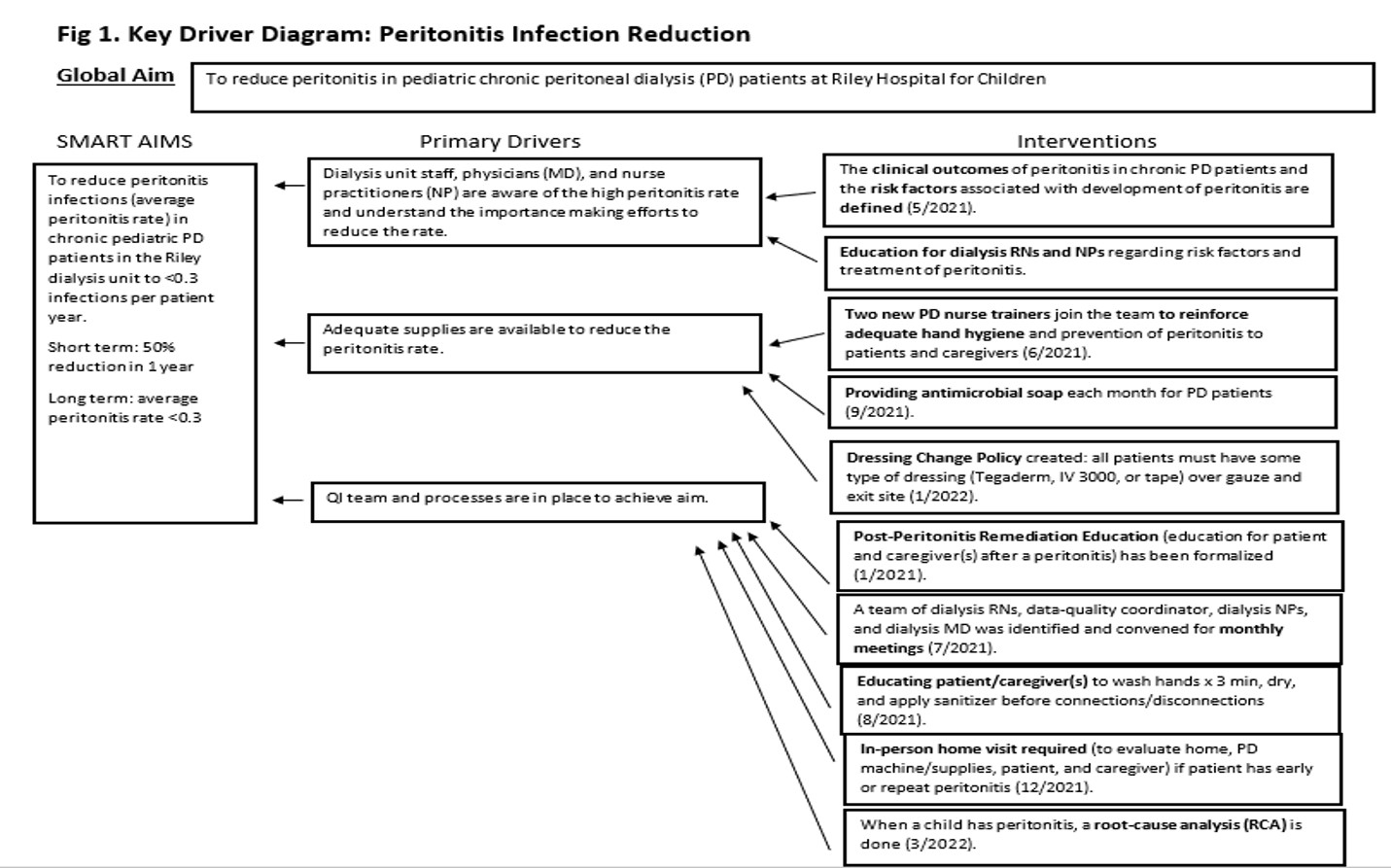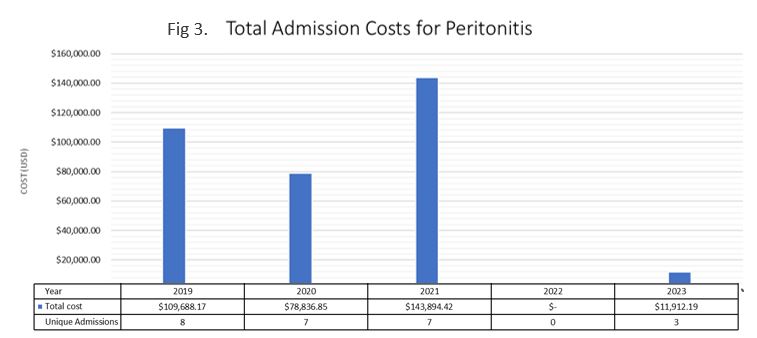Nephrology
Session: Nephrology 2
25 - Reducing peritonitis in pediatric peritoneal dialysis (PD) patients during the COVID19 pandemic– a single center’s quality improvement initiative with a focus on health equity
Saturday, May 4, 2024
3:30 PM - 6:00 PM ET
Poster Number: 25
Publication Number: 25.1293
Publication Number: 25.1293

Shrea Goswami, MBBS
Fellow
Riley Hospital for Children at Indiana University Health
Indianapolis, Indiana, United States
Presenting Author(s)
Background: Peritonitis is a common complication in PD patients, related to a break in sterile technique leading to contamination of the catheter. The WHO noted that despite several countries reporting national policies for hand hygiene, less than 10% had sufficient financing to implement them in the home. This draws attention to the importance of ensuring adequate infrastructure for handwashing in every home of a patient who is receiving PD. We noted an increase in peritonitis rate in our chronic PD patients in 2020. Limitations in patient/caregiver hand hygiene education, reduced availability of PD nursing educators, and socioeconomic stress experienced by families during the COVID pandemic were hypothesized to be potential contributing factors.
Objective: To reduce the annualized peritonitis rate in chronic PD patients at Riley Children’s Hospital by 50% in 1 year and < 0.3 episodes per patient year in 2 years (benchmark of Children’s Hospital Association SCOPE Dialysis Collaborative).
Design/Methods: As PD is performed at home, we focused on education of appropriate hand hygiene during initiation/discontinuation of PD and evaluation of handwashing infrastructure during a mandatory home visit. A post-peritonitis remediation survey was instituted, including identification of caregivers that were not previously formally trained, so that appropriate training on providing PD care could be completed. We mandated in-person home visits by a PD nurse and social worker after repeat peritonitis episodes. In addition, families were provided soap at monthly clinic visits to take home for daily use when performing PD. (Fig 1).
Results: Annualized peritonitis rate was monitored from 1/2019 until 6/2023 (Fig 2). In 2 years (by 4/2022), a rate of < 0.3 episodes per patient year was achieved. There was a significant decrease in peritonitis rates after monthly distribution of soap to families was instituted. In addition, there was a 77% reduction in total cost of peritonitis admissions from the 6-month pre-intervention period (7/2020-12/2020) to the post-intervention period (1/2023-6/2023) (Fig. 3).
Conclusion(s): Routine education of hand hygiene techniques to patients/caregivers, increasing the number of PD nurses who provide patient/caregiver training, and mandatory home visits were important to reduce peritonitis episodes. However, the most critical step was to examine the handwashing infrastructure during home visits and to provide access to antimicrobial soap. With these interventions, we were able to achieve and maintain a peritonitis rate below the national benchmark and significantly decrease healthcare-related costs.

.jpg)

